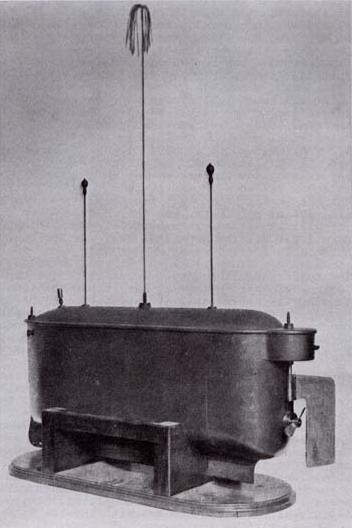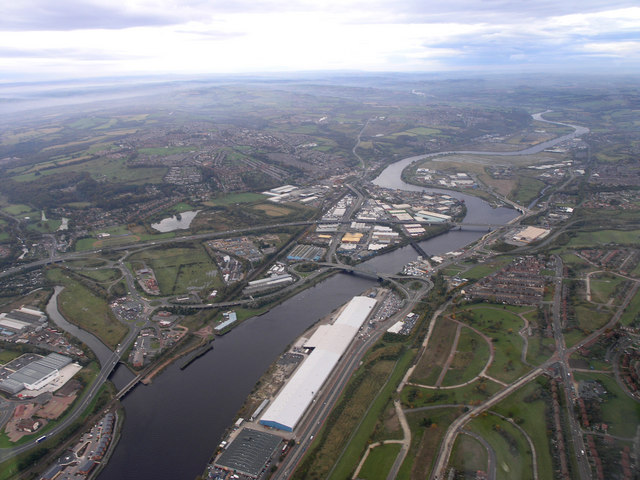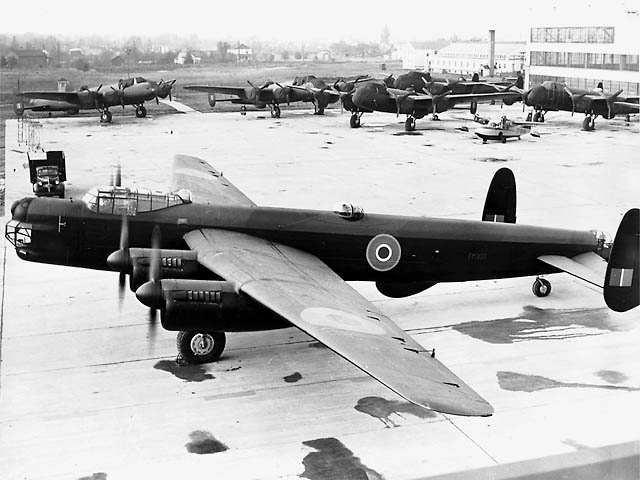|
Red Rapier
UB.109T, better known as Red Rapier, was a British cruise missile project calling for a system able to deliver a 5,000 lb (2.27 tonne) conventional warhead within 100 yards of its target at over range while travelling at at . The concept dates to an October 1950 study for a Short Range Expendable Bomber, essentially an updated V-1 flying bomb. At the time, the Royal Air Force (RAF) bomber fleet was propeller driven and not expected to be able to survive encounters with Soviet jet fighters. Looking for a way to make pinpoint tactical attacks, the Telecommunications Research Establishment (TRE) developed a new radio navigation system that provided the required accuracy. To reach the desired range, the V-1's pulsejet was replaced with small turbojets. Proposals from Bristol and Vickers appeared interesting and received development contracts under the rainbow code names "Blue Rapier" and "Red Rapier" respectively. That year, intelligence reports suggested the Soviets w ... [...More Info...] [...Related Items...] OR: [Wikipedia] [Google] [Baidu] |
Radio Guided
Radio control (often abbreviated to RC) is the use of control signals transmitted by radio to remotely control a device. Examples of simple radio control systems are garage door openers and keyless entry systems for vehicles, in which a small handheld radio transmitter unlocks or opens doors. Radio control is also used for control of model vehicles from a hand-held radio transmitter. Industrial, military, and scientific research organizations make use of radio-controlled vehicles as well. A rapidly growing application is control of unmanned aerial vehicles (UAVs or drones) for both civilian and military uses, although these have more sophisticated control systems than traditional applications. History The idea of controlling unmanned vehicles (for the most part in an attempt to improve the accuracy of torpedoes for military purposes) predates the invention of radio. The latter half of the 1800s saw development of many such devices, connected to an operator by wires, inclu ... [...More Info...] [...Related Items...] OR: [Wikipedia] [Google] [Baidu] |
Avro Lincoln
The Avro Type 694 Lincoln is a British four-engined heavy bomber, which first flew on 9 June 1944. Developed from the Avro Lancaster, the first Lincoln variants were initially known as the Lancaster IV and V; these were renamed Lincoln I and II. It was the last piston-engined bomber operated by the Royal Air Force (RAF). The Lincoln attained operational status in August 1945. It had been initially assigned to units of the Tiger Force, a Commonwealth heavy bomber force which had been intended to play a role in the Japan campaign in the closing stages of the Second World War, but the war ended before the Lincoln could participate. Production of the type proceeded and the type was adopted in quantity, complementing and progressively replacing the Lancaster in RAF service during the late 1940s. The Lincoln was deployed on operations during the 1950s. RAF squadrons equipped with the type fought against guerrilla fighters during the Mau Mau Uprising in Kenya; the RAF and the Ro ... [...More Info...] [...Related Items...] OR: [Wikipedia] [Google] [Baidu] |
Vickers-Armstrong Ltd
Vickers-Armstrongs Limited was a British engineering conglomerate formed by the merger of the assets of Vickers Limited and Sir W G Armstrong Whitworth & Company in 1927. The majority of the company was nationalised in the 1960s and 1970s, with the remainder being divested as Vickers plc in 1977. History Vickers merged with the Tyneside-based engineering company Armstrong Whitworth, founded by William Armstrong, to become Vickers-Armstrongs. Armstrong Whitworth and Vickers had developed along similar lines, expanding into various military sectors and produced a whole suite of military products. Armstrong Whitworth were notable for their artillery manufacture at Elswick and shipbuilding at a yard at High Walker on the River Tyne. 1929 saw the merger of the acquired railway business with those of Cammell Laird to form Metropolitan Cammell Carriage and Wagon (MCCW); Metro Cammell. In 1935, before rearmament began, Vickers-Armstrongs was the third-largest manufacturing employ ... [...More Info...] [...Related Items...] OR: [Wikipedia] [Google] [Baidu] |
De Havilland
The de Havilland Aircraft Company Limited () was a British aviation manufacturer established in late 1920 by Geoffrey de Havilland at Stag Lane Aerodrome Edgware on the outskirts of north London. Operations were later moved to Hatfield in Hertfordshire. Known for its innovation, de Havilland was responsible for a number of important aircraft, including the Moth biplane which revolutionised aviation in the 1920s; the 1930s Fox Moth, a commercial light passenger aircraft; the wooden World War II Mosquito multirole aircraft; and the pioneering passenger jet airliner Comet. The de Havilland company became a member of the Hawker Siddeley group in 1960, but lost its separate identity in 1963. Later, Hawker Siddeley merged into what is eventually known today as BAE Systems, the British aerospace and defence business. The de Havilland name lives on in De Havilland Canada, which owns the rights to the name and the aircraft produced by de Havilland's former Canadian subsidiary, inc ... [...More Info...] [...Related Items...] OR: [Wikipedia] [Google] [Baidu] |
Bristol Aeroplane
The Bristol Aeroplane Company, originally the British and Colonial Aeroplane Company, was both one of the first and one of the most important British aviation companies, designing and manufacturing both airframes and aircraft engines. Notable aircraft produced by the company include the 'Boxkite', the Bristol Fighter, the Bulldog, the Blenheim, the Beaufighter, and the Britannia, and much of the preliminary work which led to Concorde was carried out by the company. In 1956 its major operations were split into Bristol Aircraft and Bristol Aero Engines. In 1959, Bristol Aircraft merged with several major British aircraft companies to form the British Aircraft Corporation (BAC) and Bristol Aero Engines merged with Armstrong Siddeley to form Bristol Siddeley. BAC went on to become a founding component of the nationalised British Aerospace, now BAE Systems. Bristol Siddeley was purchased by Rolls-Royce in 1966, who continued to develop and market Bristol-designed engines ... [...More Info...] [...Related Items...] OR: [Wikipedia] [Google] [Baidu] |
Avro
AVRO, short for Algemene Vereniging Radio Omroep ("General Association of Radio Broadcasting"), was a Dutch public broadcasting association operating within the framework of the Nederlandse Publieke Omroep system. It was the first public broadcaster in the Netherlands. In 2014 AVRO merged with fellow broadcaster TROS to form AVROTROS. History On 8 July 1923, Hilversumsche Draadlooze Omroep was launched by the Nederlandsche Seintoestellen Fabriek (in English: Dutch Transmitter Factory) under supervision of Willem Vogt. On 21 July 1923, it provided the very first regular radio broadcast in the Netherlands. In 1927 it changed its name into Algemeene Nederlandsche Radio Omroep (ANRO), followed soon by a merger with Nederlandsche Omroep Vereeniging (NOV). On 28 December 1927, the two merged broadcasters continued as Algemeene Vereeniging Radio Omroep (A.V.R.O., in English: "General Association of Radio Broadcasting"). In 1938, AVRO sponsored what was the strongest chess tournamen ... [...More Info...] [...Related Items...] OR: [Wikipedia] [Google] [Baidu] |
Air Ministry
The Air Ministry was a department of the Government of the United Kingdom with the responsibility of managing the affairs of the Royal Air Force, that existed from 1918 to 1964. It was under the political authority of the Secretary of State for Air. Organisations before the Air Ministry The Air Committee On 13 April 1912, less than two weeks after the creation of the Royal Flying Corps (which initially consisted of both a naval and a military wing), an Air Committee was established to act as an intermediary between the Admiralty and the War Office in matters relating to aviation. The new Air Committee was composed of representatives of the two war ministries, and although it could make recommendations, it lacked executive authority. The recommendations of the Air Committee had to be ratified by the Admiralty Board and the Imperial General Staff and, in consequence, the Committee was not particularly effective. The increasing separation of army and naval aviation from 191 ... [...More Info...] [...Related Items...] OR: [Wikipedia] [Google] [Baidu] |
Exercise Ardent
Exercise Ardent was a massive military exercise carried out by the Royal Air Force (RAF) over the United Kingdom in 1952. It pitted Bomber Command against a combined defensive force from Fighter Command, Fleet Air Arm, several squadrons of the Royal Canadian Air Force (RCAF) and additional units from the USAF and various European NATO allies. Additionally, various British Army and Territorial Army anti-aircraft forces were included, along with the Royal Observer Corps and their RAF liaisons. Over 200,000 members of the various armed forces were involved in total, with around 1,300 aircraft flying over 7,500 sorties. It was the largest air exercise held since World War II, besting even the multinational Operation Sky Shield of the early 1960s. The exercise ran in several phases from 3 to 12 October. In most raids, Avro Lincoln and Boeing Washington bombers formed the majority of the attacking force, simulating Soviet Tupolev Tu-4 bombers, while English Electric Canberras and de Ha ... [...More Info...] [...Related Items...] OR: [Wikipedia] [Google] [Baidu] |
De Havilland Vampire
The de Havilland Vampire is a British jet fighter which was developed and manufactured by the de Havilland, de Havilland Aircraft Company. It was the second jet fighter to be operated by the Royal Air Force, RAF, after the Gloster Meteor, and the first to be powered by a single jet propulsion, jet engine. Development of the Vampire as an experimental aircraft began in 1941 during the Second World War, to exploit the revolutionary innovation of jet propulsion. From the company's design studies, it was decided to use a single-engine, twin-boom aircraft, powered by the de Havilland Goblin, Halford H.1 turbojet (later produced as the Goblin). Aside from its propulsion system and twin-boom configuration, it was a relatively conventional aircraft. In May 1944 it was decided to produce the aircraft as an interceptor aircraft, interceptor for the Royal Air Force (RAF). In 1946 the Vampire entered operational service with the RAF, only months after the war had ended. The Vampire quick ... [...More Info...] [...Related Items...] OR: [Wikipedia] [Google] [Baidu] |
Gloster Meteor
The Gloster Meteor was the first British jet fighter and the Allies of World War II, Allies' only jet aircraft to engage in combat operations during the Second World War. The Meteor's development was heavily reliant on its ground-breaking turbojet engines, pioneered by Frank Whittle and his company, Power Jets, Power Jets Ltd. Development of the aircraft began in 1940, although work on the engines had been under way since 1936. The Meteor first flew in 1943 and commenced operations on 27 July 1944 with No. 616 Squadron RAF. The Meteor was not a sophisticated aircraft in its aerodynamics, but proved to be a successful combat fighter. Gloster's 1946 civil Meteor F.4 demonstrator ''G-AIDC'' was the first Aircraft registration, civilian-registered jet aircraft in the world. Several major variants of the Meteor incorporated technological advances during the 1940s and 1950s. Thousands of Meteors were built to fly with the RAF and other air forces and remained in use for several decade ... [...More Info...] [...Related Items...] OR: [Wikipedia] [Google] [Baidu] |
Reverse Engineered
Reverse engineering (also known as backwards engineering or back engineering) is a process or method through which one attempts to understand through deductive reasoning how a previously made device, process, system, or piece of software accomplishes a task with very little (if any) insight into exactly how it does so. It is essentially the process of opening up or dissecting a system to see how it works, in order to duplicate or enhance it. Depending on the system under consideration and the technologies employed, the knowledge gained during reverse engineering can help with repurposing obsolete objects, doing security analysis, or learning how something works. Although the process is specific to the object on which it is being performed, all reverse engineering processes consist of three basic steps: Information extraction, Modeling, and Review. Information extraction refers to the practice of gathering all relevant information for performing the operation. Modeling refers to th ... [...More Info...] [...Related Items...] OR: [Wikipedia] [Google] [Baidu] |
Tu-4 Bull
The Tupolev Tu-4 (russian: Туполев Ту-4; NATO reporting name: Bull) is a piston-engined Soviet strategic bomber that served the Soviet Air Force from the late 1940s to mid-1960s. It was reverse-engineered from the American Boeing B-29 Superfortress. Design and development Toward the end of World War II, the Soviet Union saw the need for a strategic bombing capability similar to that of the United States Army Air Forces. The Soviet VVS air arm had the locally designed Petlyakov Pe-8 four-engined "heavy" in service at the start of the war, but only 93 had been built by the end of the war and the type had become obsolete. The U.S. regularly conducted bombing raids on Japan, from distant Pacific forward bases using B-29 Superfortresses. Joseph Stalin ordered the development of a comparable bomber. The U.S. twice refused to supply the Soviet Union with B-29s under Lend Lease. [...More Info...] [...Related Items...] OR: [Wikipedia] [Google] [Baidu] |











